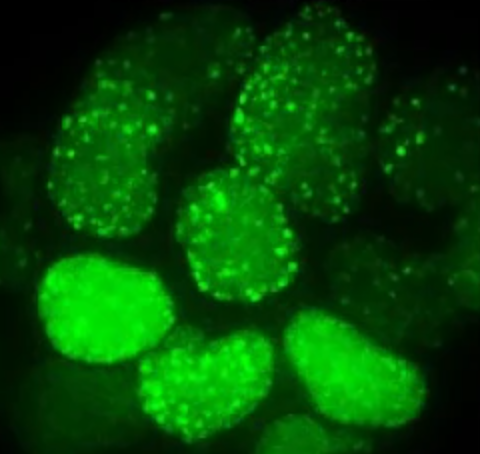Space Force’s X-37B space plane to test revolutionary quantum navigation system in orbit
The X-37B, a small but powerful space plane, will head into orbit carrying with it experiments that could redefine how humans travel through space.

The X-37B is set for its eighth flight with experiments in quantum navigation and laser communications that could reshape space exploration. (CREDIT: Boeing)
On August 21, 2025, a small but powerful space plane will once again head into orbit, carrying with it experiments that could redefine how humans travel through space. The X-37B, a reusable orbital test vehicle operated by the U.S. Space Force, is scheduled for its eighth flight and will lift off from NASA’s Kennedy Space Center in Florida aboard a SpaceX Falcon 9 rocket.
The flight, named USSF-36, will mark yet another milestone for the Boeing-built craft, which resembles a miniature version of NASA’s retired space shuttle at about 29 feet long. While the X-37B’s missions have long been cloaked in secrecy, this time the military has revealed more than usual, highlighting two experiments: advanced laser communications and a groundbreaking quantum navigation system.
A Space Plane with a Long Record
The X-37B has quietly been building a track record since its first flight in 2010. There are two vehicles in the fleet, and each has stayed in space for remarkably long stretches. One returned in 2022 after 908 days aloft, while another landed earlier this year after 434 days in orbit. Both operate without crews and are designed for repeated use, often carrying classified payloads that have left space watchers guessing at their purpose.
This new mission, known as OTV-8, will carry a service module that expands the plane’s capacity for hosting experiments. In addition to the U.S. Space Force, the Air Force Research Laboratory and the Defense Innovation Unit will place instruments on board. The stated goals include testing “high-bandwidth inter-satellite laser communications” and demonstrating what officials call the highest-performing quantum inertial sensor ever flown in space.
Why Navigation Without GPS Matters
You rely on GPS every day without thinking about it. From smartphone directions to airplanes and container ships, satellite navigation has become the invisible backbone of modern life. But GPS isn’t foolproof. The signals can be jammed, spoofed, or blocked altogether, especially during conflict. Submarines under the ocean can’t access GPS at all, and once spacecraft leave Earth’s orbit, the signals become too weak to be of use.
Related Stories
- Chrysalis Starship could take 2,400 passengers on a 400 year voyage to the planet Proxima b
- NASA Scientist Creates a Space Rocket That Runs Without Fuel
That’s where the quantum inertial sensor comes in. Unlike GPS, it doesn’t depend on any outside signals. Instead, it works by precisely measuring motion and rotation using the strange but reliable behavior of atoms. Traditional inertial navigation systems also attempt this, tracking acceleration and direction over time. But those systems eventually drift off course as tiny errors add up. Quantum navigation promises to keep accuracy far longer.
As U.S. Space Force Chief of Space Operations Gen. Chance Saltzman explained, “Bottom line: testing this tech will be helpful for navigation in contested environments where GPS may be degraded or denied.”
The Quantum Advantage
At the heart of this new system is atom interferometry, a technique that takes advantage of the wave-like nature of matter. When atoms are cooled close to absolute zero, they act not just as particles but as waves that can be split, put on different paths, and then recombined. As these paths overlap, they create interference patterns similar to ripples colliding on the surface of a pond. The resulting pattern reveals exactly how the atoms moved, down to the tiniest shifts.
By analyzing these patterns, scientists can measure acceleration and rotation with extraordinary sensitivity. Because atoms are identical and immune to many of the flaws that affect mechanical instruments, they provide far greater stability. The result is a navigation system that can remain accurate over long stretches without ever needing to check against GPS.
This is not the first time atom interferometers have been flown in space. NASA’s Cold Atom Laboratory on the International Space Station and the German Aerospace Center’s MAIUS-1 mission have demonstrated the physics. But the X-37B experiment goes further: it’s not just science for science’s sake, but a compact, durable unit intended to prove its worth for real missions.
Bringing the Lab to the Skies
Quantum navigation has already taken steps outside the lab. In 2024, Boeing and AOSense carried out the first quantum inertial navigation test aboard a crewed aircraft, maintaining GPS-free navigation for roughly four hours. That same year, the United Kingdom conducted its first quantum navigation flight test on a commercial plane. Submarine tests have also shown promise, proving that the technology works where GPS never reaches.
Now the X-37B will attempt to show that the approach is viable in space. If successful, it could provide a reliable navigation system for missions to the Moon, Mars, or even deeper into the solar system, where Earth’s signals won’t reach. It could also serve as a backup closer to home, offering resilience if GPS is disabled.
More Than Navigation
While the quantum experiment has captured the spotlight, the other major demonstration on OTV-8 involves laser communications. Compared to traditional radio, laser links can carry more data with improved security. They could form the backbone of future space communication networks, connecting satellites and spacecraft with higher reliability and faster speeds.
Gen. Saltzman described the importance of the demonstration, noting that it will “strengthen the resilience, reliability, adaptability, and data transport speeds of our satellite communications architectures.” In other words, the test is not just about moving data but about building a network that can withstand disruptions.
Practical Implications of the Research
The X-37B’s quantum navigation test could change how future missions explore space, giving astronauts and spacecraft a way to find their way without Earth’s help. This will be vital for journeys to the Moon, Mars, or further out, where GPS isn’t available.
On Earth, the same technology could aid submarines, aircraft, and even ships that need reliable navigation in areas where signals are blocked or compromised.
If laser communications succeed, they could also reshape how satellites talk to each other, making the world’s data networks faster and more secure. Together, these experiments mark a significant leap toward more independent and resilient space travel.
Note: The article above provided above by The Brighter Side of News.
Like these kind of feel good stories? Get The Brighter Side of News' newsletter.



